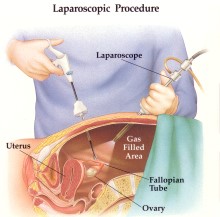Fertility Investigation
Definition of sub-fertility:
- Inability of a couple to conceive after 12 months unprotected intercourse (6 months if >35).
- Inability to carry a pregnancy to a live birth.
There are two types of sub-fertility:
- Primary – difficulty conceiving for a couple who have not had a baby before.
- Secondary – inability to become pregnant again when the same partners have had a baby before.
It’s quite common not to fall pregnant immediately; the general rule of thumb is to start investigation after a year of unprotected intercourse for female below 35 years old and within 6 months for those above 35 years old.
The first test that a couple must embark is actually semen analysis for the husband. It is cheap, easy and the fastest way to determine if male factor infertility is involved. This test can be done after 3-5 days after the last intercourse. If the husband’s sperm count is poor, then we know that the only way to help the couple is by doing IVF treatment (or test tube baby). The wife may notneed to check her fallopian tubes.
If the sperm count is good, then we can proceed to check the wife. The wife will need these tests:
Basic Infertility Studies:
|
HUSBAND |
WIFE |
|
Semen Analysis Abstinence from ejaculation for 3-5 days before analysis. WHO GUIDELINE Total count: 40 million/ml Motile count: 20 million/ml Progression: >50% rapid linear Morphology (Shape): >15% normal
|
Baseline Infertility Hormone Studies To be done between Day 2 – Day 6 of menstrual cycle for the assessment of hormone profile of the patients.
a) Follicle Stimulating Hormone b) Luteinising Hormone c) Estradiol d) Progesterone e) Prolactin f) Qhcg
|
|
|
Pelvic ultrasound To ensure that there’s no cyst, fibroid, Polycystic ovarian syndrome (PCOS), polyp and to confirm that the uterus is normal.
|
|
|
Diagnostic Laparoscopy:
This is a good assessment tool for the doctor as it allows a total and comprehensive view of the reproduction system. It is especially useful for patients with complaints of period pain or irregular period – this procedure can assess patient for PCOS syndrome, Pelvic Inflammation Disease and Endometriosis. This procedure is done under General Anaesthesia, with no open incision. Most patients can be discharged on the same day.
|
Enquire from us
Send an enquiry to us now and get a Free Consultation for your visit.
